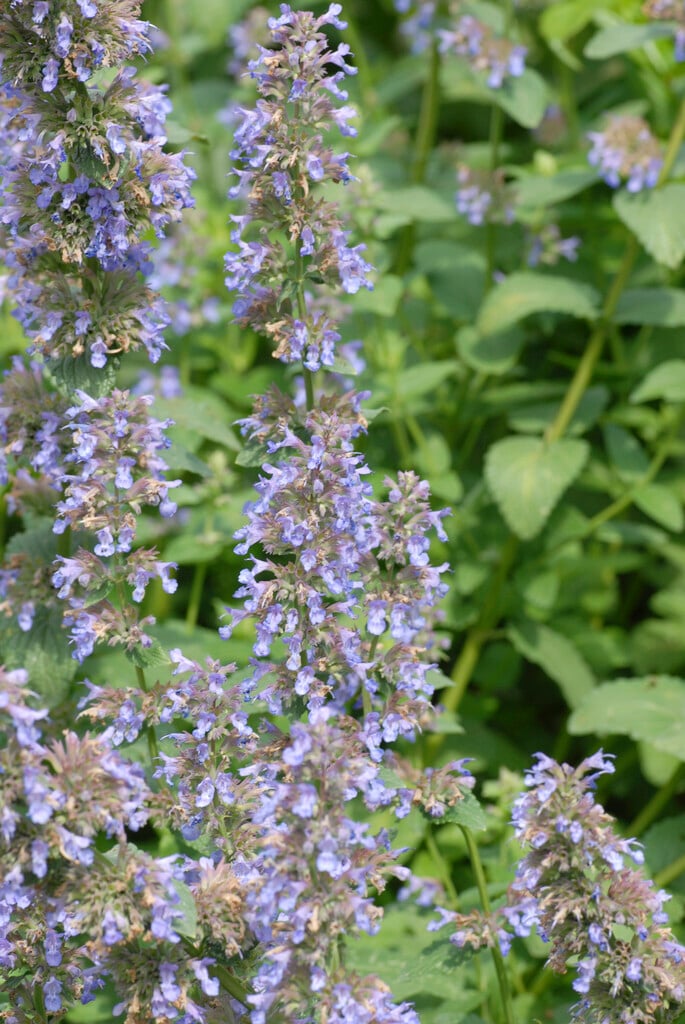Nepeta parnassica
Greek catmint
A clump-forming perennial with upright stems to 1.8m tall bearing scallop-edged, grey-green, triangular to oval-shaped, aromatic leaves. Spikes of tubular, lilac-blue flowers with darker calyces are borne from summer into early autumn
Size
Ultimate height
1.5–2.5 metresTime to ultimate height
2–5 yearsUltimate spread
0.5–1 metresGrowing conditions
Moisture
Well–drainedpH
Acid, Alkaline, NeutralColour & scent
| Stem | Flower | Foliage | Fruit | |
| Spring | Green Grey Silver | |||
|---|---|---|---|---|
| Summer | Blue Purple | Green Grey Silver | ||
| Autumn | Blue Purple | Green Grey Silver | ||
| Winter |
Position
- Full sun
Aspect
South–facing or West–facing or East–facing
Exposure
Exposed or ShelteredDrought resistance
Yes Hardiness
H7Botanical details
- Family
- Lamiaceae
- Native to GB / Ireland
- No
- Foliage
- Deciduous
- Habit
- Clump forming
- Genus
Nepeta can be annuals or, more commonly, perennials, with paired, usually aromatic leaves, and terminal spikes or panicles of 2-lipped, tubular flowers
- Name status
Correct
- Plant range
- Albania, Greece
How to grow
Cultivation
Grow in any well-drained soil in full sun or partial shade. May need support
Propagation
Propagate by seed, by division in spring or autumn or by softwood cuttings in early summer
Suggested planting locations and garden types
- Coastal
- Cottage and informal garden
- Mediterranean climate plants
- Gravel garden
- Wildlife gardens
- Flower borders and beds
Pruning
Trim after flowering to keep plants compact and to encourage a second flowering
Pests
Generally pest-free
Diseases
May be susceptible to powdery mildews
Get involved
The Royal Horticultural Society is the UK’s leading gardening charity. We aim to enrich everyone’s life through plants, and make the UK a greener and more beautiful place.
